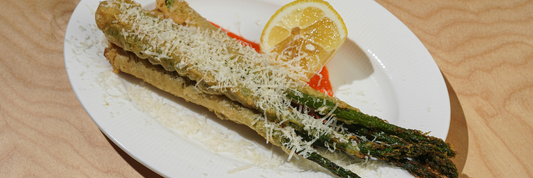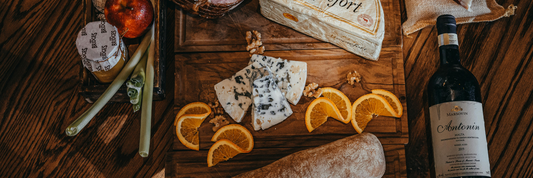Starting a bakery is exciting but it also requires smart planning. One of the first challenges every new bakery owner faces is choosing the right equipment. Buy too much and you’ll tie up capital. Buy too little and production slows down.
This guide provides a complete bakery equipment checklist designed for startups and small shops. You’ll learn how to prioritize what’s essential, plan your layout efficiently, and choose the right tools from ovens to sustainable packaging from KimEcopak.
- Essential Coffee Shop Equipment: A Complete Guide for Beginners
- How to Start a Catering Business – Step-by-Step Guide for Beginners
Why Choosing the Right Bakery Equipment Matters

Every successful bakery runs on consistency and efficiency. The right setup helps you:
- Save time: Streamlined tools speed up daily prep.
- Cut waste: Precise ovens and mixers reduce product loss.
- Maintain quality: Proper refrigeration and proofing ensure consistent texture and taste.
- Stay compliant: Food safety and sanitation equipment protect your brand.
For small bakeries with limited space, every piece of equipment must earn its place so focus first on the essentials.
Essential Bakery Equipment for Every Startup
These items form the backbone of your operations.
Baking & Cooking Equipment
- Convection oven: Ideal for cookies, muffins, pastries, and cupcakes.
- Deck oven: Best for artisan breads or crusty loaves.
- Proofing cabinet: Maintains humidity and temperature for perfect dough rise.
- Mixers (planetary or spiral): Handles batters, creams, and dough efficiently.
Tip: Start with mid-capacity ovens and mixers that match your daily production volume you can scale later.
Want to see how small bakeries showcase their creations with sustainable packaging? Explore the Bakery Packaging Collection from KimEcopak for inspiration.
Food Preparation Tools
- Stainless steel work tables and counters
- Rolling pins, spatulas, whisks, piping bags
- Digital scales for accurate ingredient measurement
- Timers and thermometers for consistency
- Measuring cups and spoons
Accuracy here saves both ingredients and money two of your biggest controllable costs.
Refrigeration & Storage Units
- Reach-in refrigerator and freezer for perishables
- Ingredient bins and dry storage racks
- Blast chiller for desserts or laminated doughs
- Walk-in cooler if space allows
Proper storage extends ingredient life and reduces spoilage a crucial part of cost control in bakeries.

Cleaning & Sanitation Equipment
- Handwashing and three-compartment sinks
- Dishwasher or warewasher
- Ventilation hood for ovens and fryers
- Floor drains, mops, sanitizing buckets, gloves, aprons
Food safety isn’t optional, it’s a daily habit. Set up cleaning zones near production and packaging areas for smooth flow.
Display, Sales & Packaging Area
- Display case or countertop bakery cabinet
- POS system and receipt printer
- Packaging station includes sealing, wrapping, and labeling tools
- Bakery boxes, paper bags, and coffee cups for takeaway
Your packaging area should be near your display counter to keep operations efficient.
For eco-conscious packaging that complements your baked goods, explore:
KimEcopak’s sustainable materials help small bakeries project an eco-friendly brand while keeping packaging costs predictable. Get sample now!
Optional Equipment for Growth or Specialization
When your bakery starts growing, consider adding these upgrades:
- Bread slicer for loaves and sandwich breads
- Dough divider or rounder for high-volume operations
- Sheeter or laminator for croissants and puff pastry
- Chocolate tempering machine for confectionery
- Automated packaging machine for faster sealing
Invest gradually don’t rush to buy equipment before confirming consistent demand.
Layout Planning for Small Bakery Spaces
Even the best equipment fails if your layout is inefficient.
Plan a one-way production flow:
Storage → Preparation → Baking → Cooling → Packaging → Display / Delivery
Layout tips:
- Keep hot and cold zones separate.
- Place heavy-use stations (oven, prep table) close together.
- Design packaging areas with room for materials like boxes, bags, and labels.
- Use vertical shelving for space-saving storage.
For small bakeries that also serve coffee, check out eco-friendly coffee packaging to keep your counter visually cohesive.
Budgeting and Buying Smart
Starting costs for bakery equipment vary depending on scale, but here are smart budgeting tips:
- Start small: Buy essentials first, add specialty tools later. Compare suppliers: Ask for maintenance plans and warranties.
- Buy refurbished where safe: Many bakeries source gently used mixers and ovens to cut costs.
- Lease or finance large equipment to preserve cash flow.
- Track ROI: Prioritize purchases that directly improve output or reduce labor.
Maintenance & Energy Efficiency
Consistent upkeep extends lifespan and reduces unexpected downtime.
- Clean mixers, ovens, and ventilation systems daily.
- Schedule monthly inspections for belts, bearings, and heating elements.
- Calibrate thermometers and timers quarterly.
- Switch to energy-efficient ovens and LED lighting where possible.
Small upgrades can reduce utility costs by 10–20%, directly improving profit margins.

FAQ about Bakery Equipment Checklist for Startups and Small Shops
Q: What equipment do I need to start a small bakery?
A: At minimum, you’ll need ovens, mixers, proofers, refrigeration, prep tables, sinks, and packaging supplies.
Q: How much does bakery equipment cost?
A: A basic bakery setup can range from $15,000–$60,000, depending on size and equipment quality. Start with essentials and expand as sales grow.
Q: Should I buy new or used bakery equipment?
A: Used equipment can save up to 40%, but always check service history, energy efficiency, and warranty options.
Q: What’s the best packaging for small bakeries?
A: Kraft paper, compostable bags, and eco coffee cups from KimEcopak offer durability and sustainable branding at a fair cost.
Q: How do I maintain bakery equipment efficiently?
A: Clean daily, schedule preventive maintenance, and record inspections. It saves money long-term and ensures consistent product quality.
Conclusion
Launching a bakery doesn’t have to be overwhelming. By using a clear equipment checklist, prioritizing essentials, and choosing energy-efficient and sustainable solutions, you can set your business up for success even with limited space or budget.
And when it comes to packaging, partner with a supplier that grows with you. Explore KimEcopak’s bakery packaging collection for eco-friendly boxes, coffee cups, and paper bags that make your brand look as good as your pastries taste.
Ready to turn your bakery dream into reality? Start with the right tools, stay smart about costs, and let KimEcopak support your next big bake.
-
LEARN MORE about How "Subscribe for a Happy Life" will benefits your business HERE!
-
LEARN MORE about Kim Vu, sharing on the challenges she faced as a former restaurant owner, and how she overcame them to create KimEcopak HERE!




